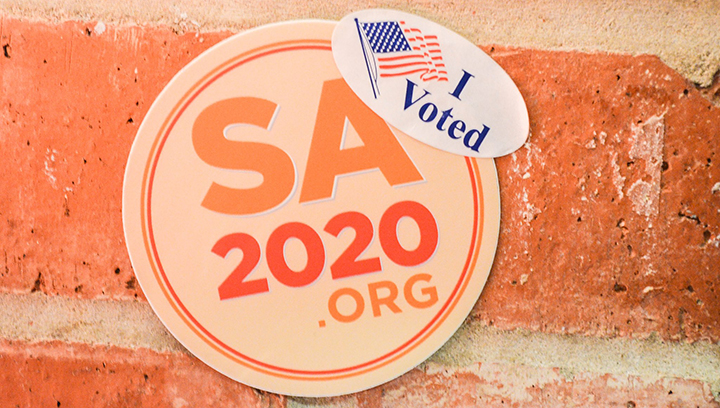Election Day for the Texas primary is just 1 week away! On March 1st, you’ll have 12 hours to cast your vote at your local polling place. This week, however, you have 4 more days to visit any voting location you wish. We encourage everyone to take advantage of early voting; it’s easy, quick, and convenient. Read on for more details about primary voting, and then make a plan to #VoteSA!
When and where can I vote?

While you must vote in your own precinct on Election Day, you’re free to vote at any location during early voting. From local libraries to big malls, there’s likely a polling place close to your work, school, or home. You can stop by the one that’s most convenient for you from 8 a.m. to 8 p.m. to vote (and grab your “I Voted” sticker, of course). Click here to see an interactive map with the locations.
What do I need?
Texas now requires that all voters show an acceptable photo ID. This must be a Texas or U.S. government-issued ID; out-of-state driver licenses will not be accepted. The following forms of ID will work:
- Texas driver license
- Personal identification card issued by DPS
- Concealed handgun license
- Election Identification Certificate
- U.S. passport
- Military identification card
- Citizenship certificate or naturalization certificate with photograph
Who’s on the ballot?
The primary election might be most well-known for choosing a Republican and Democratic presidential nominee, but there are many more candidates on the ballots! You’ll be voting for candidates for US Representative, Railroad Commissioner, the State Board of Education, and many more to represent their respective parties. The ballots will vary based on you where you live; click here to see your own ballot and check out a super handy voters’ guide about all your candidates.
Primaries, parties, conventions… what’s it all about?
Primary voting can get a little more confusing than the November election. Our friends at the League of Women Voters of San Antonio explain the process:
- When you vote in a political party’s primary, you become affiliated with that party for the next two years. At the time you vote, your voting certificate will be stamped with the name of the party in whose primary you vote. You may vote in only one party’s primary. If there is a runoff, you may vote only in the same party’s runoff election. (Note that in the general election in November, voters may vote for any candidate they wish, regardless of whether they voted in a party primary or runoff or participated in a party convention. All candidates from all parties are on the same ballot.)
- Conventions: Only party members can participate in the precinct, county or senatorial district, and state conventions of a particular party. Proof of party affiliation (i.e., your stamped voting certificate) is needed for admission to a party’s convention.
- Party precinct conventions are the first step in the process that:
- adopts the state party platform;
- certifies the party’s nominees for state office in general elections;
- selects delegates to the party’s county or senatorial district, and the state and national conventions;
- nominates presidential electors;
- elects national party committee members;
- and writes the national party platform.

Primary voting is “Part 1” of the 2016 election year! The general election is November 8th, with another round of early voting scheduled before that. If you weren’t registered in time for the primary election, be sure to register by October 10th. If you’re already registered and have already voted, share these registration and election resources with friends and family who haven’t! Let’s make this the year we #VoteSA in huge numbers.

